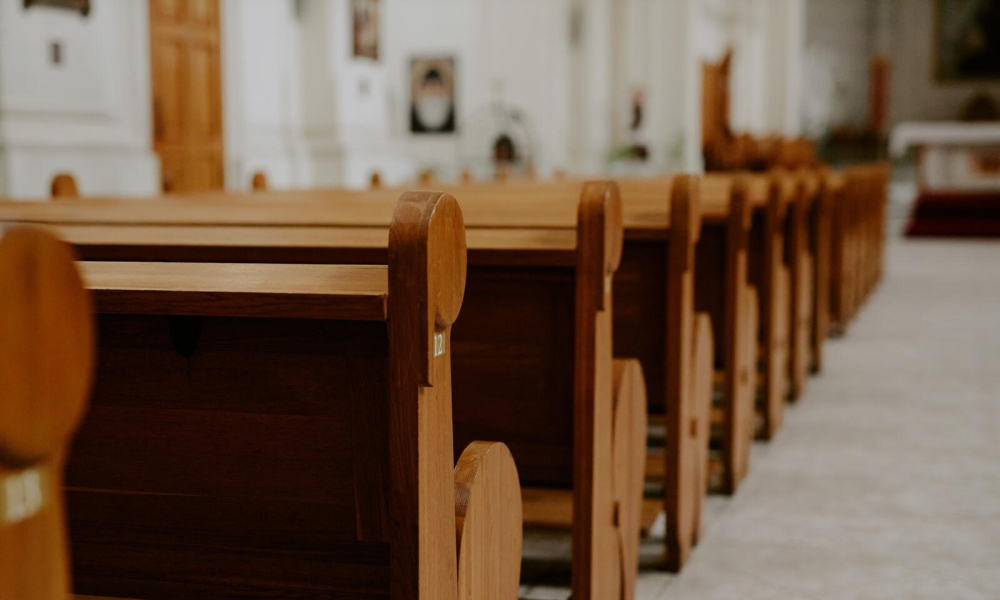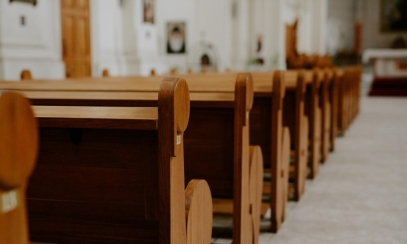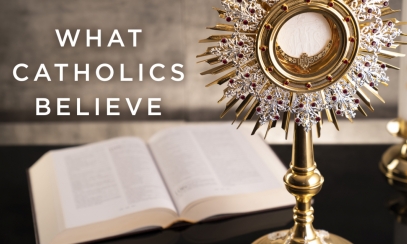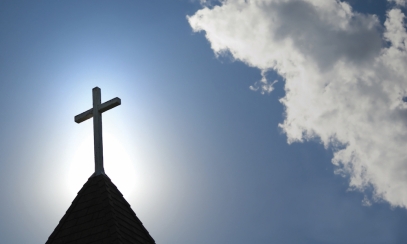
The Mass: "Father, we thank you."
The Eucharistic Prayer forms the heart of the second part of the Mass, the Liturgy of the Eucharist. Many people do not realize that the priest can choose to pray any one of 10 different eucharistic prayers found in the Roman Missal. Eucharistic Prayer I, also called the Roman Canon because it was the only eucharistic prayer used in the Roman Catholic Church until 1969, has a unique structure all its own. (Future columns will provide an explanation of this ancient and venerable prayer.) But the remaining nine eucharistic prayers, Eucharistic Prayers II, III, and IV, the two Eucharistic Prayers for Reconciliation, and the four Eucharistic Prayers for Various Needs and Occasions all share the same literary structure and logic to them. Since Eucharistic Prayers II and III are the most commonly used prayers, this column will draw its examples from them.
All 10 eucharistic prayers begin with the same dialogue between the priest celebrant and the faithful: “The Lord be with you; and with your spirit. Lift up your hearts; we lift them up to the Lord. Let us give thanks to the Lord our God; it is right and just.” After this, follows the part of the Eucharistic Prayer called the preface, which changes from day to day, week to week, and occasion to occasion. The preface describes the reasons why we are giving thanks to God. It concludes with everyone singing the song of the angels at the liturgy of heaven, “Holy, Holy, Holy.” Our celebration of Mass is meant to draw us up into the worship of God taking place perpetually in heaven. The eucharistic prayers then continue with a few more reasons for giving thanks to God, for example, “You give life to all things” (Eucharistic Prayer III), or “You are … the fount of all holiness” (Eucharistic Prayer II).
Following this, the priests ask God the Father to send the Holy Spirit on the bread and wine in order to transform them into the body and blood of Christ. “Make holy, therefore, these gifts … so that they may become for us the body and blood of our Lord Jesus Christ” (Eucharistic Prayer II). “By the … Spirit, graciously make holy these gifts we have brought to you for consecration” (Eucharistic Prayer III). At this point, the priest and the people praying with him are no longer giving thanks to God the Father. Rather, they are making intercession to God the Father. They are asking something of God, in this case, that the Holy Spirit sent from the Father will transform what is now merely bread and wine into what will be for us the body and blood of the Lord.
In order to make absolutely clear to God the Father what we are asking, the priest then proceeds to quote the very words of Jesus spoken at the Last Supper, “This is my body…. This is the chalice of my blood.” At this point, we might think that the priest is speaking directly to us. After all, he is saying “Take this all of you.” Moreover, the priest might be looking at us as he is saying this. These words and this gesture can mislead us into thinking that the priest has begun to address us. He has not. He is continuing to speak to God the Father, as he has been doing from the beginning of the prayer. He is simply quoting the words of Jesus to God the Father, as if to remind the Father that Jesus promised to be with the Church throughout time through the presence of His body and blood. For this reason, we beg the Father to send the Holy Spirit upon the bread and wine so that the Church can be blessed with the living and bodily presence of the risen Jesus as He promised. In addition, the words and gestures of the priest can also lead us to mistakenly believe that we are reenacting the Last Supper, the priest playing the role of Jesus and we playing the role of the apostles. But this is not the case. There is nothing at all make-believe about what we do at Mass.
At the Last Supper, Jesus declared to His apostles His intention to give up His life for us, to shed His blood and hand over His body to death so that we might be saved. Jesus fulfilled that intention the next day, Good Friday, by His death on the cross. By the celebration of Mass, that mystery, which was begun at the Last Supper and fulfilled on Good Friday, becomes present to us today. It is re-presented to us in our time under the signs of bread and wine. By our participation at Mass, we come face-to-face with Jesus still giving His life for us now as He once did on the cross. What’s more, it is the living Jesus, the risen Jesus, who still offers His life to the Father for us even in the present. That’s why immediately after Jesus’s words at the Last Supper, we sing to Jesus, “We proclaim your Death, O Lord….” Jesus has just become present in our midst, body and blood, soul and divinity under the appearances of bread and wine. In response to this mystery of faith, we directly address Jesus Himself, now present on the altar for the first time during Mass, professing our gratitude for our salvation. By the power of Jesus’s own words, spoken by the priest, and by the power of the Holy Spirit, we are now truly in the presence of the crucified and risen Lord.
Msgr. Marc Caron is director of the Center for Continuing Formation at Saint Mary’s Seminary and University in Baltimore, Maryland.



